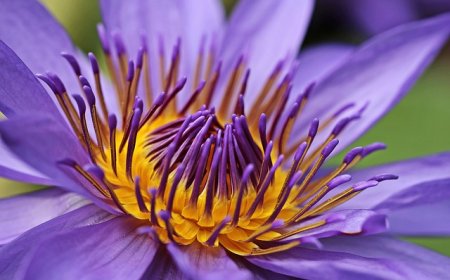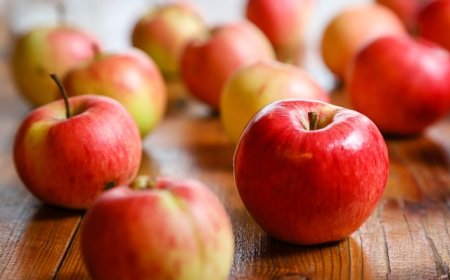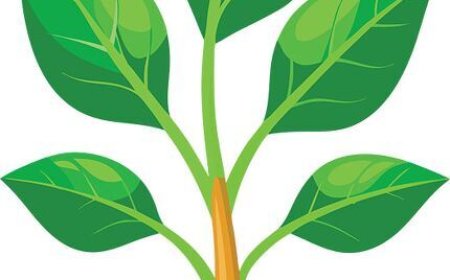Photosynthesis for Students – How Plants Use Sunlight to Make Food
Discover how photosynthesis works, why it's important for life on Earth, and how plants use sunlight, water, and carbon dioxide to grow
☀️ Photosynthesis: How Plants Make Their Own Food
🌿 Introduction
Photosynthesis is one of the most important biological processes on Earth. It allows plants, algae, and some bacteria to make their own food using sunlight, and in the process, they release oxygen—which animals and humans need to breathe!
Without photosynthesis, there would be no plants, no animals, and no people. In this article, you’ll learn what photosynthesis is, how it works, and why it's so important for all life on our planet.
🌞 What Is Photosynthesis?
Photosynthesis is the process by which green plants use sunlight to make their own food. The word comes from two Greek words:
- "Photo" means light
- "Synthesis" means putting together
So, photosynthesis means “putting together with light.” Plants use this process to turn carbon dioxide (CO₂) from the air and water (H₂O) from the soil into glucose (a type of sugar), which they use for energy and growth.
At the same time, they release oxygen (O₂) into the air.
🧪 The Photosynthesis Formula (in simple terms)
Here's a simplified version of the chemical reaction that happens during photosynthesis:
Carbon dioxide + Water + Sunlight → Glucose + Oxygen
6CO₂ + 6H₂O + sunlight → C₆H₁₂O₆ + 6O₂
Plants take in carbon dioxide through tiny holes in their leaves and water through their roots. They use sunlight captured by a green pigment called chlorophyll in their leaves to create glucose and release oxygen into the air.
🌱 Where Does Photosynthesis Happen?
Photosynthesis mainly takes place in the leaves of plants, which are specially designed for this process.
Important parts involved:
- Chloroplasts – Tiny parts inside plant cells where photosynthesis occurs
- Chlorophyll – The green pigment in chloroplasts that captures sunlight
- Stomata – Tiny pores on leaves that let carbon dioxide in and oxygen out
- Roots – Absorb water from the soil
- Xylem – Vessels that carry water up from the roots to the leaves
Most photosynthesis happens in the top layer of leaves where the cells contain lots of chloroplasts.
🍬 What Does the Plant Do With the Glucose?
Plants use the glucose they make in photosynthesis in several ways:
- Energy – Glucose provides energy for the plant to grow and carry out other functions.
- Storage – Extra glucose is stored as starch in roots, stems, or fruits (like potatoes, carrots, or apples).
- Building blocks – Glucose is used to make cellulose, the material that forms the plant’s cell walls.
Just like humans use food for energy and body repair, plants use the sugar they make to survive and grow.
🌍 Why Is Photosynthesis Important?
Photosynthesis is essential for life on Earth, and here’s why:
- It provides oxygen.
Plants release oxygen into the air, which humans and animals need to breathe. - It removes carbon dioxide.
Plants take in carbon dioxide, which helps reduce greenhouse gases. - It creates food.
All food chains begin with plants. Without photosynthesis, animals—including humans—would have no food. - It supports ecosystems.
Plants provide shelter and food for countless organisms in forests, oceans, and grasslands. - It helps the climate.
Forests and plants help regulate Earth’s temperature by storing carbon dioxide.
🔍 Vocabulary Words
| Word | Definition |
|---|---|
| Photosynthesis | The process by which plants use sunlight to make food |
| Chlorophyll | Green pigment in leaves that absorbs sunlight |
| Chloroplast | Cell structure where photosynthesis takes place |
| Glucose | A sugar made by plants to use as energy |
| Stomata | Tiny openings in leaves that allow gases to enter and exit |
| Carbon dioxide (CO₂) | A gas plants need to make food |
| Oxygen (O₂) | A gas produced by plants during photosynthesis |
🔬 Photosynthesis in Different Organisms
While green plants do most of the photosynthesis on land, other organisms do it too:
- Algae – Tiny plant-like organisms in water. They produce a lot of the oxygen we breathe!
- Phytoplankton – Microscopic organisms in oceans. They perform about 50% of Earth’s total photosynthesis.
- Cyanobacteria – Bacteria that can photosynthesize. They were among the first life forms on Earth to make oxygen.
Even though they’re small, these organisms are very powerful!
🧠 Kid-Friendly Summary
Photosynthesis is how green plants use sunlight, water, and air to make their own food. It happens mostly in the leaves. During this process, plants:
- Take in carbon dioxide from the air
- Use water from the soil
- Capture sunlight with chlorophyll
- Make glucose (sugar) for energy
- Release oxygen into the air
This amazing process helps plants grow and gives us the oxygen we need to breathe.
🌟 Interesting Facts About Photosynthesis
- Plants use less than 1% of the sunlight that hits them to power photosynthesis!
- The Amazon rainforest produces 20% of the world’s oxygen through photosynthesis.
- Photosynthesis first appeared on Earth more than 2.5 billion years ago.
- In space, astronauts grow plants to help clean the air through photosynthesis.
- Without photosynthesis, Earth would be a lifeless, oxygen-free planet.
📘 Key Takeaways
- Photosynthesis is the process by which plants make food using sunlight, water, and carbon dioxide.
- It happens in the chloroplasts inside leaves and uses chlorophyll to capture sunlight.
- Photosynthesis produces glucose for energy and oxygen for the air.
- It’s vital for the survival of all living things on Earth.
- Algae and tiny organisms in the ocean also photosynthesize and support life on the planet.




















































